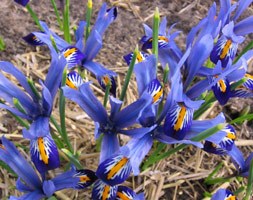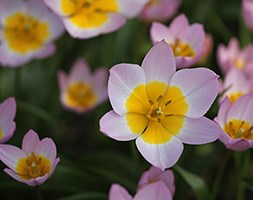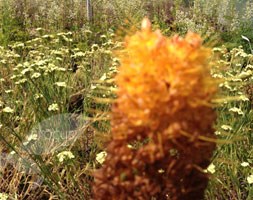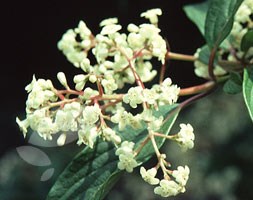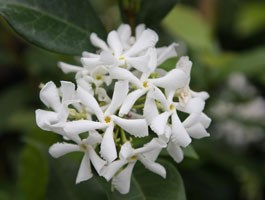Price reductions at Crocus
by Sarah - November 15th, 2013.Filed under: Crocus, Price Reductions.
Reduced price on items today at Crocus
Iris ‘Gordon’ (Reticulata) (iris bulbs) was £2.49 now £1.79
Position: full sun Soil: well-drained, moderately fertile, neutral to slightly alkaline soil Rate of growth: average Flowering period: February to March Flower colour: purple-blue, yellow and white Hardiness: fully hardy Bulb size: 5/- Slender, sky-blue standards, which have a darker blue flush, are held above the generously patterned, purple-blue, white and orange falls. A tough and reliable cultivar that mixes easily with crocus and primroses. Garden care: Plant bulbs 5cm deep and 5 – 10cm apart in the autumn, in a sunny spot with well-drained soil. Water moderately while they are actively growing and keep reasonably dry during their dormant period.
Tulipa saxatilis (Bakeri Group) ‘Lilac Wonder’ ((Bakeri Group) tulip Lilac Wonder bulbs) was £2.99 now £1.99
Position: full sun Soil: fertile, well-drained soil Rate of growth: average Flowering period: April-May Flower colour: pinkish-lilac Other features: all parts of the plant may cause a mild stomach upset if ingested; contact with any parts of the plant may aggravate skin allergies Hardiness: fully hardy Bulb size: 5/7 Bowl-shaped mauve-pink flowers, with a paler interior and a luminous, well-defined eye, appear in profusion from mid-spring. Compact in habit, they are ideally suited to pots or windowboxes, as well as filling gaps towards the front of the border. Garden care: In November or December plant bulbs 10-15cm deep in fertile, well-drained soil. After flowering dead-head and apply a balanced liquid fertiliser each week for the first month.
asparagus ‘Gijnlim’ (asparagus Gijnlim crowns) was £2.99 now £2.49
Position: full sun Soil: any moderately, fertile soil Rate of growth: average Hardiness: fully hardy An all-male F1 variety with bright green spears and deep purple tips that produces an exceptionally high yield. The crowns are best planted between March and May, and though a few spears can be cut the following year, it is best left for two years so that it can grow into a strong plant. Gijnlim has been awarded an Award of Garden Merit by the Royal Horticultural Society. Garden care: Your asparagus will arrive as bare-root crowns and should be unpacked and planted as soon as possible. Traditionally Asparagus are planted in spring, but the crowns can be planted at any point from autumn to spring. They need a sunny spot, shelter from strong winds and well-prepared soil that ideally has had lots of manure or compost added in the previous autumn. Good drainage is important too, so if your soil is heavy and wet, it would be advisable to grow them in a raised bed. Prepare the bed well (ideally well before planting) by removing all the weeds and digging in lots of well-rotted manure or composted organic matter. When planting, dig a trench approximately 30cm wide and 20cm deep and work a little more organic matter into the base of the trench. Using the excavated soil, create a 10cm tall, arched ridge down the length of the trench and sit the crowns on top. Allow 30-45cm between each plant. Spread the roots out to form a star-shape and cover them with the remaining soil, leaving the tops of the crowns just visible. Subsequent rows should be at 45cm intervals with staggered planting. Immediately after planting, water thoroughly and mulch with a generous layer of composted organic matter. During the growing season keep them well fed with a dressing of general purpose fertiliser and make sure the bed stays free of weeds. The first spears will appear soon after planting, but it is important that these are not cut, but allowed to develop into feathery stems throughout the summer. These can be cut back to just above ground level after they have started to die back in autumn. Before the new spears appear in subsequent years, make a ridge of soil over each row and apply a dressing of general purpose fertiliser. If you can, try to resist harvesting the spears, which appear in the second year too, as the plant should be left to develop a robust crown before you begin cutting the spears in their third year.
Eremurus ‘Rumba’ (foxtail lily) was £7.99 now £4.99
Position: full sun Soil: fertile, sandy, well-drained soil Rate of growth: fast Flowering period: June and July Hardiness: fully hardy One of the stars at the Chelsea Flower Show in 2013, this is a superb plant (the photo really does not do it justice!) with impressive spires of summer flowers. Foxtail lilies need to be planted in fertile but well-drained soil with the crown not far below soil level. They start to grow in late winter and spring, gathering their strength before they produce their towering flower spikes in summer. Each flower spike has hundreds of flowers, which open from the bottom upwards, creating a stunning effect. They thrive in the sunniest spot in the garden, especially if the base of the plant isn’t shaded as this can decrease the number of flowering spikes produced. Garden care: Every three to five years carefully lift and divide congested clumps in early autumn. Replant the strongest crown on a layer of sharp grit, spreading out the roots and covering them with a thin (5cm/2in) layer of soil. In frost-prone areas cover with a dry mulch of fern leaves.
Viburnum x hillieri ‘Winton’ (viburnum) was £17.99 now £15.99
Position: full sun or partial shade Soil: moderately fertile, moist, well-drained soil Rate of growth: average Flowering period: June Flower colour: creamy-white Other features: red fruits ripening to black in autumn, which can cause a mild stomach ache if ingested Hardiness: fully hardy Once established, this luscious shrub will keep most of its leaves throughout the year, but while still young, you can expect it to shed most of them each autumn, unless it is planted in a sheltered garden. The foliage however is lovely. When it emerges in spring (no matter how old the plant is), it is flushed with a copper hue, which fades as they mature. Becoming green with age, the foliage will then become infused with a bronze-red colouring in autumn, and this will often remain through winter. On top of this, there is also an abundance of beautifully scented, creamy-white flowers, which appear in spring, and later red berries ripen to near-black. Definitely worth a place on the short-list. Garden care: Requires minimal pruning. Where necessary remove any misplaced or diseased branches in mid-summer after flowering.
Trachelospermum jasminoides (star jasmine) was £69.99 now £59.99
Position: full sun Soil: fertile, well-drained soil Rate of growth: average Flowering period: June to August Flower colour: white flowers Other features: very fragrant flowers Hardiness: frost hardy (needs winter protection) An attractive woody, evergreen climber with rich, dark green leaves which turn bronze in winter. Clusters of fragrant, pure white flowers are produced from mid- to late summer. It is best grown against a warm, sunny wall in milder areas or in a greenhouse or conservatory in areas prone to severe frosts. Garden care: After flowering has finished prune back to fit the available space. In frost prone areas, grow in pots of loam-based potting compost, such as John Innes No2 and move to a frost-free spot in winter.







